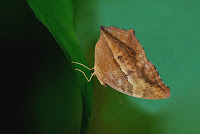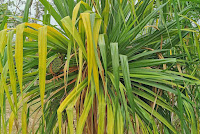<> Yoma sabina (Cramer, 1780) <>
the Lurcher ผีเสื้อโยม่า
Click on any photo to see all photos full size in Lightbox
Additions and corrections to the information provided on this page is always welcome. Please use the Contact form.
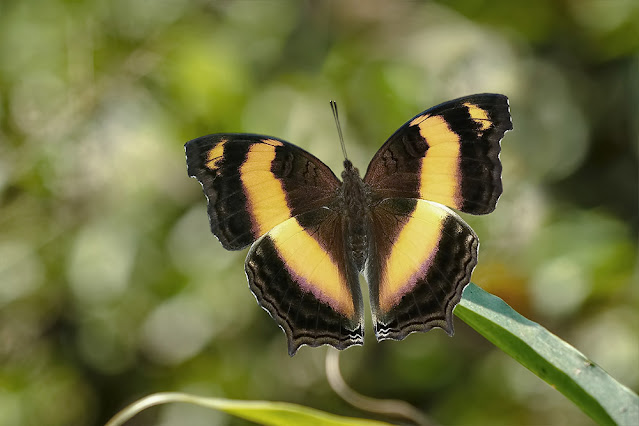
Photo taken near Siem Reap, Cambodia. ♂ ~380m a.s.l.

A large but rather elusive species. It is quite timid and very easily disturbed. Although easy to spot when it is flying, it descends very quickly and often settles on the underside of leaves, thereby disappearing from sight. The sexes are similar in appearance but it is the male that is usually seen due to its hilltopping behaviour surveying its territory from the top of bushes. Fairly widely distributed in the region although rarely in great numbers.
Yoma sabina adults can reportedly live up to 9 weeks. They fly throughout most of the year and are multivoltine with several broods per annum.
Synonyms and previously used names: Papilio sabina, Yoma vasuki, Rhinopalpa amelia, Rhinopalpa sabina
Taxonomy: Animalia - Arthropoda - Insecta - Lepidoptera - Nymphalidae - Nymphalinae - Yoma - sabina
Regional subspecies: Y.s.javana (Indonesia), Y.s.nimbus (Indonesia), Y.s.podium (Taiwan), Y.s.sabina (Indonesia), Y.s.vasuki (Myanmar, Thailand, Laos, Cambodia, Vietnam, S.China, Malaysia)
Regional Distribution: Myanmar, Thailand, Laos, Cambodia, Vietnam, China, Taiwan, Malaysia, Indonesia, Philippines
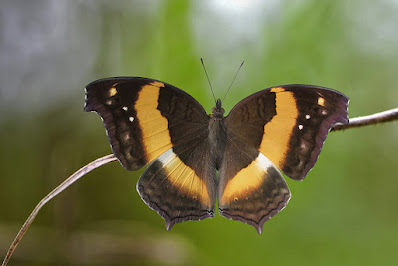 |
Doi Suthep-Pui National Park, Chiang Mai, Thailand ♀ 700m a.s.l. |
Habitat: Yoma sabina is a forest dependent species and is found in open montane forest and lowland rainforest. It is often found near streams at elevations up to ~1000m a.s.l.
Flight time: most of the year, depending on location Wingspan: 70-80mm
Life History: the details are not fully known but total egg to adult is around 28-36 days.
Larval Hosts: Graptophyllum pictum, Justicia gendarussa, Lepidagathis formosensis, Ruellia blechum, Ruellia prostrata, Ruellia repens, Ruellia tuberosa, Strobilanthes linearifolia, Strobilanthes reptans (Acanthaceae), Pandanus tectorius (Pandanaceae), Premna serratifolia (Lamiaceae), Artocarpus heterophyllus (Moraceae). Hosts used depends upon location and availability of plant species.
Adult Food Sources: Nectar - Bidens pilosa, Chromolaena odorata, Zinnia elegans (Asteraceae), Duranta erecta (Verbenaceae), Corymbia ficifolia (Myrtaceae). There are also other flowering plant species that are visited but they have not been formally recorded or identified. Other - mud puddling
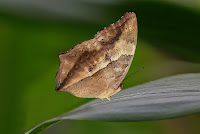 |
| Doi Suthep-Pui National Park, Chiang Mai, Thailand |
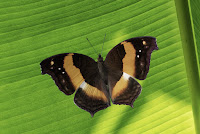 |
| Doi Suthep-Pui National Park, Chiang Mai, Thailand |
Links to other pages in this series for species in the same subfamily

